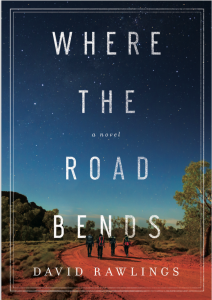by David Rawlings, @DavidJRawlings

I decided to change my focus of this blog post – it’s still about writing, but it’s those words you write to attract people to your writing.
And it’s all because of what happened in my inbox on Monday.
I hate spam.
Not the faux-meat shaped like dog food, but the unwanted rubbish that appears in my email inbox every morning. The type of communication that leaves me disappointed is that of the 100 emails I’ve got waiting for me, only 3 are actually real people with something for me. And on Monday, everything that arrived in my inbox was spam.
I’ve noticed how much it’s infiltrating social media as well. The whole “fake news” movement means that we are becoming jaded to social media posts in our own feed, which is reinforced every time we see “Such cute dogs – Number #7 will melt your heart” or “You won’t believe Back to the Future was released 36 years ago.” (I would actually, I was there when it first screened).
I’ve studied spammers as a part of my day job: I write social media strategies and content for clients, and decided to get my head around what spammers do, and what impact it has. By spammers, I don’t necessarily just mean those people who sit in a sweaty internet café in the Ukraine or Togo, but those companies (legit or not) who end up flooding your inbox with stuff you don’t want.
That’s what defines spam. It’s not the fact that the communication is illegal or dodgy. It’s the fact that it’s unwanted and irrelevant.
And, as I’ve moved into fiction writing, I’ve seen authors make those same mistakes (and I’ve even been tempted by a few myself).
Clearly we don’t want to be spammers, putting people off from engaging with us in the social media space, so what can we learn from them? Well, we can learn from the five things they do wrong.
- An overfamiliarity with me
We’ve all gotten that spam email. The one that reads like it’s come from a long-lost friend, despite the fact that you’ve got no idea who the sender is. This type of email sounds like this:
“Hey David! Great to see you doing so well in business! But I’m sure you’d love to do so much better, so lucky for you that I’ve got the product that will deliver exactly what you need!”
This is how I respond to this as I read it …
“Hey David! (Who are you again?) Great to see you doing so well in business! (How would you know?) But I’m sure you’d love to do so much better (I don’t actually), so lucky for you (I don’t believe in luck when it comes to business) that I’ve got the product that will deliver exactly what you need (exactly what I need … how on earth would you know that?)!”
Do you know what that person was offering in that email? I don’t know. I stopped reading, and I enjoyed shunting their email to the Trash folder. Probably a little too much to be honest.
So what’s the lesson for authors? Presume nothing and don’t be too over-personal unless you’ve earned the right first. Learn about your audience first, THEN deliver something for them. Learn what they read, what they like, what they respond to and what puts them off. Then use THAT as a base for your connection with them.
- Expecting way too much, way too soon
I get the emails that are heavy on the sales pitch FROM DAY ONE. It doesn’t work. This is what that email looks like:
“As an introductory offer, we will give you 20% off, but only if you respond in the next 14 minutes …”
Sorry, but I don’t care about 20% off if it turns out that it will be a 100% waste of money. I need time to research that. So that manufactured rush to get me to respond actually is counter-productive, because now I want to know why there’s such a hurry to push me into a sale.
As authors, we can’t expect everyone to read our elevator pitch and then buy our book. That takes time for most people. They want to experience our ability, read some excerpts or be impressed with some recommendations.
Lesson for authors: a small percentage of your audience will buy after the first interaction. Cater for the majority, who want to know more. Much more. And understand that your communication isn’t supposed to open and close a transaction in one hit. It’s supposed to add another brick to the wall.

- Being a salesperson first and foremost
I subscribe to a few eNewsletters, and will pretty much try anything in this field, although I am pretty ruthless when it comes to which ones I unsubscribe from.
The ones I flick have one thing in common – they’re all thinly-disguised sales pitches. When I engage with an organization or an individual, and my expectation is that they’ll be providing me with advice, ideas, challenges or information that I can absorb – and they then do nothing but sell me stuff, I’m outta there.
I know some authors who constantly post that their book is available on Amazon ALL THE TIME. In the end I mentally switch off from anything they post, and that costs them the important bridge that social media is supposed to build.
Lesson for authors: Build bridges, then apply a toll. Resist the urge to sell, sell, sell ALL THE TIME. There is nothing wrong with selling, but you need to have people’s trust, respect and interest before they’ll accept your sales pitch.
- Firing off a million emails, hoping to make one hit
You might have received those emails that look like they went to a million people, but still have a quasi-personal message about them.
This is what that looks like: “Hey customer, we all want to do better in life, regardless of what we want to achieve. Our product will do everything you need it to do, in a way that will really make your life turn around!”
Okay, so here’s my problem with this: in trying to be vague enough to reach everyone, they end up hitting no-one. When you’re online, you really need to target who you are speaking to (regardless of whether it’s a blog post, social media post or even web page). And calling me a customer instantly devalues all the other faux-personal style of the rest of the email or post.
If you’re an author, you need to speak more personally to people. It might be harder work, but it’s worth it.
Lesson for authors: if you’ve got a range of different groups following you (writers, readers, Christian friends and contacts and schoolteachers [for example]), then write four posts – one targeted to each group. It’s four times the work, granted, but it’s also the best way to engage with people – at their level. One post that tries to reach everyone just doesn’t engage with people.
- Tell a story as if I’ve got the time to read it
I used to follow a real estate agent because I liked what they had to say. In bite-sized chunks of information, they’d talk about what was happening in property and focused it on what I was interested in.
Then someone else took over, and everything changed. Suddenly their posts and their articles took on a longer feel, and the writer (the new boss) felt that they needed to qualify everything first. That meant they were talking about themselves for paragraphs, before getting to what I was interested in in the last paragraph (sometimes this also went for Facebook posts).
I lasted a week.
You see, I haven’t got a heap of time to invest in reading this material. And I don’t want to waste time on information that doesn’t engage with me. So I don’t read.
One thing I’ve found in business is that perfectly sums up the usual social media user. We all want to know what’s in it for us in the first five words. Not invest five minutes reading some waffle until the writer eventually gets to the point.
That’s the last thing we can learn from: get to the point. You’ve got a handful of words to connect with your audience, so use them.
Lesson for authors: start every post with a statement that connects with your audience. Talk in their language, framing what you’ve got to say in the best way possible so a reader can digest it according to what they want. Don’t give them the history of the genre, give them the reason to read your book. Don’t go on and on about the fact you’ve got a newsletter – tell them why they’d subscribe.
So that’s how my professional expertise informs how I connect with readers (and I’m still learning and tinkering).
What is your biggest frustration with spam, and what can you learn from it?
Four friends reconnect fifteen years after graduation on a promised trip to the Australian outback. Time has changed them. At graduation life was all about unfulfilled potential. Fifteen years down the track, it feels a lot like regret.
As they get lost in outback Australia they find more than harsh beauty of an unspoilt land… … they discover how the road of life delivered them to where they are now.
And getting back requires them to determine where they’ll go from here.

Based in South Australia, David Rawlings is an award-winning author, and a sports-mad father-of-three with his own copywriting business who reads everything within an arm’s reach. He writes that take you deeper into life, posing questions of readers to explore their own faith and how they approach life.
Where the Road Bends – a novel based in outback Australia – is out now! Why not take a virtual vacation during your time at home?
David’s debut novel – The Baggage Handler – won the 2019 Christy Award for First Novel. His second novel – The Camera Never Lies – focuses on honesty in relationships and is now available.
He is currently signed with Thomas Nelson and represented by The Steve Laube Agency.

